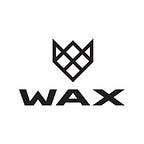Collectors in the age of resale
The resale market for luxury goods and collectibles has become a topic of discussion more and more frequently in circles of collectors and luxury shoppers. It seems as if few people continue to shy away from it. Most that still do are the collectors that seek rapid appreciation of their collectibles and can’t bear paying more for something than its primary retail value. This means that they hound the primary market for limited supply pieces that can be sold on the secondary market for monetary turnover almost immediately (on second thought, and without judgement, this might actually contradict what a collector is). Meanwhile some collectors have only ever shopped resale because they shop exclusively for vintage items, and the primary market would simply defeat the purpose. The secondary market is what single handedly enables this person to expand their collection. Many collectors seek out items that are old and new and truth be told, there is an endless list of happy mediums between the two extremes.
What seems to be true is that today the resale market has a relationship with every collector in some way shape or form and is a legitimate place to find collectable treasures. This is having a major effect on primary markets. Secondary markets for collectibles are outpacing their primary counterparts, and the larger they grow, the more dependent brands become on them. For the last few years, the market for secondhand luxury goods has been growing by a steady 12% and is expected to continue to do so through at least 2021. These numbers have paved the way for the success of resale secondary market players like The Real Real who boasts a luxury resale shopping experience in prime retail locations like Soho in downtown New York and on Melrose Ave in Los Angeles.
This brings us to wonder what the future of the resale market and its relationship to the originators of its contents is. Surely luxury brands are contemplating ways to capitalize within the resale market and we can certainly assume that brands are in direct conversation with secondary entities. As the secondary market grows, brands have to face the fact that consumers are being influenced by it. The perception of an item on the resale market plays an important role in driving the primary market. The longevity of a product’s value is ascribed by methods of production, material, and cultural relevance — this longevity is a main pillar that holds up virtually every luxury retail brand. If the resale market indicates that the value of a luxury item isn’t holding up, this can have a negative impact on the brand overall. Luxury brands and other retailers that sell collectible products in the primary market also depend on the secondary market for data on their own products.
There are several characteristics that are driving the rapid, unprecedented, growth of the luxury resale market in regards to the shopping/collecting habits of millennial and generation Z collectors. One of the zeitgeists that is defining the modern collector is the obsession over collaborations. It doesn’t matter whether collaborations stay within the luxury realm or if they cross pollinate between luxury and fast fashion, luxury and food and beverage, luxury and film franchises, you name it, and oftentimes the more obscure the collaboration, the more desirable it may be. Collaborations are almost always released as exclusives which means that their time on the primary market is usually pretty short lived and the secondary market is an easier place to find them (thanks to those sneaky rapid appreciation collectors). Another characteristic that is defining the modern collector and driving the growth of the resale market is the global emphasis on sustainability. Not only is sustainability something that has impacted the resale market, but big brands have followed suit and have become aware of their own processes. This transformation in the luxury market further indicates future uprisings of alliances between luxury brands and players within the secondary market.
The de-stigmatization of the resale market that has occurred as a result of these two modern collecting habits is what really unleashed the beast. The resale market is no longer characterized as a place for hand-me-downs and surreptitiously purchased discounted goods, but rather a world that takes a level of insider knowledge to navigate and discern the good from the bad as well as a place that represents the mindfulness of sustainable practices. The resale market isn’t something you should miss out on and we recommend it for any and all collectors who aren’t already taking advantage of it.
